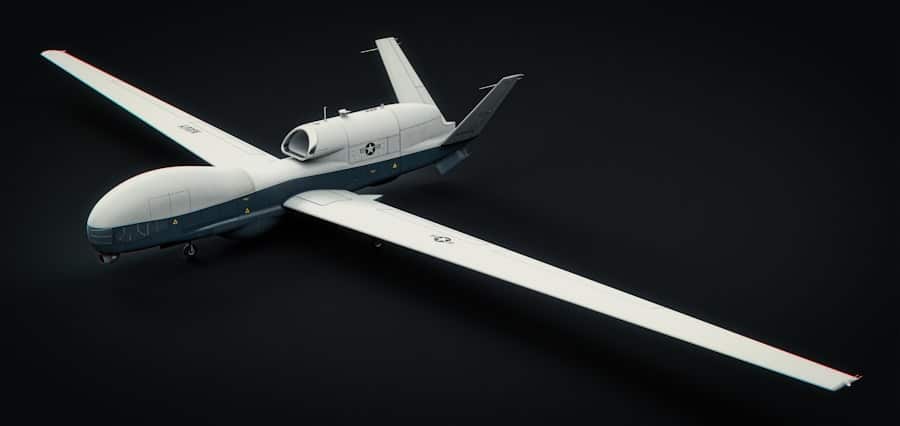The advent of artificial intelligence (AI) has ushered in a new era of possibilities across various sectors, and disaster response and recovery is no exception. As natural disasters become increasingly frequent and severe due to climate change and urbanisation, the need for efficient and effective response mechanisms has never been more critical. AI technologies are being harnessed to enhance the capabilities of emergency services, improve decision-making processes, and ultimately save lives.
By leveraging vast amounts of data, AI can provide insights that were previously unattainable, enabling responders to act swiftly and strategically in the face of calamity. AI’s role in disaster management encompasses a wide range of applications, from early warning systems that predict impending disasters to sophisticated algorithms that optimise resource allocation during recovery efforts. The integration of AI into disaster response frameworks not only enhances operational efficiency but also fosters a more proactive approach to managing crises.
As we delve deeper into the various facets of AI in this domain, it becomes evident that its potential is vast, yet it also raises important questions about ethics, reliability, and the future of human involvement in disaster management.
Summary
- AI plays a crucial role in disaster response and recovery by providing early warning systems, predictive analysis, search and rescue operations, damage assessment, resource allocation, and communication coordination.
- AI technology enhances early warning systems by analysing data from various sources to detect potential disasters and alert authorities and communities, enabling timely evacuation and preparation.
- AI enables predictive analysis and risk assessment by processing large amounts of data to identify vulnerable areas and populations, helping authorities to allocate resources and plan for potential disasters.
- AI assists in search and rescue operations by using drones, robots, and other technologies to locate and assist survivors in disaster-affected areas, improving response time and effectiveness.
- AI aids in damage assessment and resource allocation by analysing satellite imagery and other data to assess the extent of damage and optimise the allocation of resources for recovery efforts.
AI Technology for Early Warning Systems
Early warning systems (EWS) are critical components in mitigating the impacts of disasters. They provide timely alerts to communities at risk, allowing for evacuation and preparedness measures to be implemented. AI technologies have significantly improved the accuracy and speed of these systems.
For instance, machine learning algorithms can analyse historical weather data alongside real-time meteorological information to predict severe weather events such as hurricanes or floods with greater precision. By identifying patterns and anomalies in data, AI can generate forecasts that are not only more reliable but also tailored to specific geographical areas. One notable example is the use of AI in tsunami warning systems.
Traditional methods often rely on seismic data alone, which can lead to delays in issuing warnings. However, AI can integrate multiple data sources, including oceanographic sensors and satellite imagery, to assess the likelihood of a tsunami occurring after an earthquake. This multi-faceted approach allows for quicker decision-making and more effective communication with at-risk populations.
The implementation of such advanced EWS has the potential to save countless lives by ensuring that communities receive timely alerts and can take appropriate action.
AI for Predictive Analysis and Risk Assessment

Predictive analysis powered by AI is transforming how we assess risks associated with natural disasters. By employing advanced algorithms that process vast datasets, including geographical information systems (GIS), demographic data, and historical disaster records, AI can identify vulnerable areas and populations. This capability enables governments and organisations to allocate resources more effectively and develop targeted preparedness strategies.
For example, AI can predict which regions are most likely to experience flooding based on rainfall patterns, soil saturation levels, and topographical features. Moreover, risk assessment models enhanced by AI can simulate various disaster scenarios, allowing stakeholders to understand potential impacts better. These simulations can inform urban planning decisions, ensuring that infrastructure is built with resilience in mind.
In regions prone to earthquakes, for instance, AI can help design buildings that withstand seismic activity by analysing structural vulnerabilities and suggesting improvements. This proactive approach not only minimises damage but also reduces the economic burden on communities during recovery phases.
AI for Search and Rescue Operations
In the chaotic aftermath of a disaster, search and rescue operations are paramount in saving lives. AI technologies are increasingly being integrated into these operations to enhance efficiency and effectiveness. Drones equipped with AI capabilities can survey disaster-stricken areas quickly, providing real-time imagery that helps responders locate survivors trapped under debris or in isolated locations.
These drones can be programmed to recognise human shapes or heat signatures, significantly speeding up the search process compared to traditional methods. Additionally, AI-driven robotics are being developed to assist in search and rescue missions. For example, robotic systems can navigate hazardous environments where human responders may be at risk.
These robots can be deployed in scenarios such as collapsed buildings or areas affected by chemical spills, where their ability to operate autonomously or remotely can be invaluable. The integration of AI into search and rescue not only enhances operational capabilities but also allows human responders to focus on critical decision-making tasks rather than being exposed to dangerous conditions.
AI for Damage Assessment and Resource Allocation
Following a disaster, assessing damage accurately and efficiently is crucial for effective recovery efforts. AI technologies are revolutionising this process by automating damage assessment through image recognition and analysis. Satellite imagery and aerial photographs can be processed using machine learning algorithms to identify damaged infrastructure, such as collapsed buildings or washed-out roads.
This rapid assessment allows emergency services to prioritise their response efforts based on the severity of damage in different areas. Furthermore, AI plays a vital role in optimising resource allocation during recovery operations. By analysing data on population density, infrastructure status, and available resources, AI systems can recommend where aid should be directed most urgently.
For instance, if a particular neighbourhood has suffered extensive damage but has limited access to emergency services, AI can flag this area for immediate attention. This data-driven approach ensures that resources are deployed where they are needed most, ultimately enhancing the overall effectiveness of recovery efforts.
AI for Communication and Coordination in Disaster Response

Effective communication and coordination among various stakeholders are essential during disaster response operations. AI technologies facilitate this process by streamlining information sharing and enhancing situational awareness. Chatbots powered by natural language processing (NLP) can provide real-time updates to both responders and affected communities, answering queries about safety measures or available resources.
This immediate access to information helps alleviate panic and confusion during crises. Moreover, AI can assist in coordinating efforts among different agencies involved in disaster response. By analysing data from multiple sources such as social media feeds, emergency service reports, and community feedback AI systems can provide a comprehensive overview of the situation on the ground.
This holistic view enables decision-makers to allocate resources more effectively and ensures that all stakeholders are working towards common goals. The ability to synthesise vast amounts of information into actionable insights is invaluable in high-pressure situations where every second counts.
Ethical Considerations and Challenges of AI in Disaster Response
While the benefits of integrating AI into disaster response are substantial, it is essential to address the ethical considerations and challenges that accompany its use. One significant concern is the potential for bias in AI algorithms, which could lead to unequal treatment of different communities during disaster response efforts. If historical data used to train these algorithms reflects systemic inequalities, there is a risk that vulnerable populations may not receive adequate support when disasters strike.
Additionally, the reliance on AI technologies raises questions about accountability and transparency. In situations where decisions are made based on algorithmic recommendations, it may be challenging to ascertain who is responsible if those decisions lead to negative outcomes. Ensuring that human oversight remains integral to the decision-making process is crucial in maintaining accountability while harnessing the power of AI.
Future Developments and Opportunities for AI in Disaster Response and Recovery
The future of AI in disaster response and recovery holds immense promise as technology continues to evolve. One area ripe for development is the integration of AI with other emerging technologies such as blockchain and the Internet of Things (IoT). For instance, IoT devices can collect real-time data from various sensors deployed in disaster-prone areas, feeding this information into AI systems for more accurate predictions and assessments.
Moreover, advancements in machine learning techniques will likely enhance the capabilities of predictive models used for risk assessment and early warning systems. As more data becomes available from diverse sources—ranging from social media activity during disasters to satellite imagery—AI will be able to refine its analyses further, leading to even more effective disaster management strategies. In conclusion, while challenges remain regarding ethics and implementation, the potential for AI to transform disaster response and recovery is significant.
As we continue to explore innovative applications of this technology, it is imperative that we do so with a focus on equity, accountability, and collaboration among all stakeholders involved in disaster management efforts.
In a recent article discussing the importance of AI in disaster response and recovery, it is evident that technology plays a crucial role in mitigating the impact of natural disasters. This is further highlighted in a related case study on promoting sustainable development , where innovative solutions are explored to address environmental challenges. Additionally, the use of AI in disaster management can also benefit from ergonomic solutions such as the best back cushion , which can improve the comfort and productivity of emergency responders during crisis situations. By leveraging technology and sustainable practices, organisations can enhance their disaster preparedness and recovery efforts.
FAQs
What is the role of AI in disaster response and recovery?
AI plays a crucial role in disaster response and recovery by helping to predict and detect disasters, assess damage, coordinate rescue efforts, and provide support for recovery and rebuilding.
How does AI help in predicting and detecting disasters?
AI can analyse large amounts of data from various sources such as satellite imagery, weather patterns, and social media to identify potential disasters such as floods, wildfires, and earthquakes.
How does AI assist in assessing damage during a disaster?
AI can process and analyse aerial imagery and satellite data to assess the extent of damage caused by a disaster, helping to prioritise response efforts and allocate resources effectively.
How does AI support coordination of rescue efforts during a disaster?
AI can help in coordinating rescue efforts by analysing real-time data to identify areas of high priority, optimise routes for emergency responders, and even deploy drones for search and rescue operations.
How does AI contribute to recovery and rebuilding efforts after a disaster?
AI can assist in recovery and rebuilding efforts by analysing data to identify areas in need of support, predicting future risks, and providing insights for urban planning and infrastructure development.
